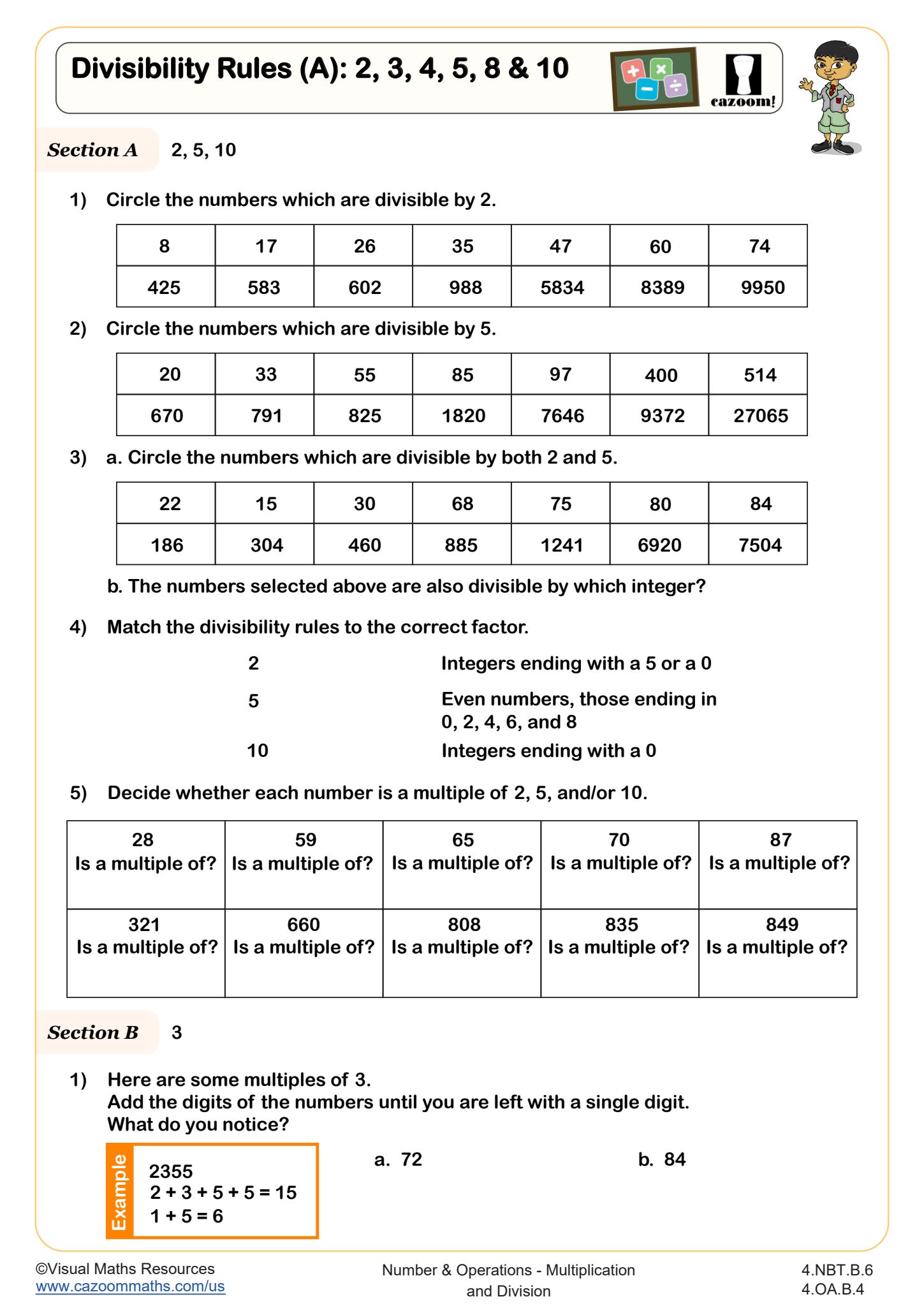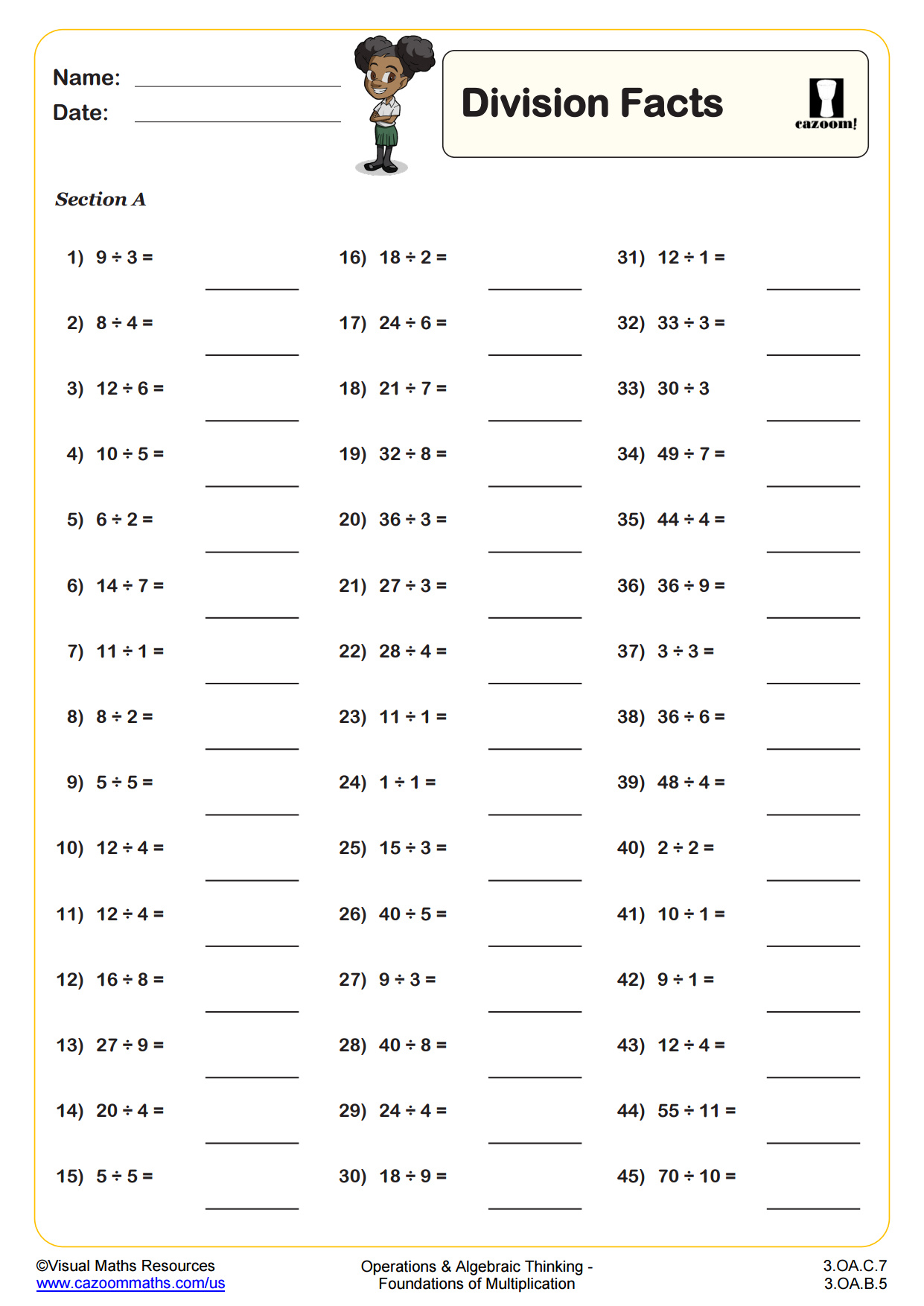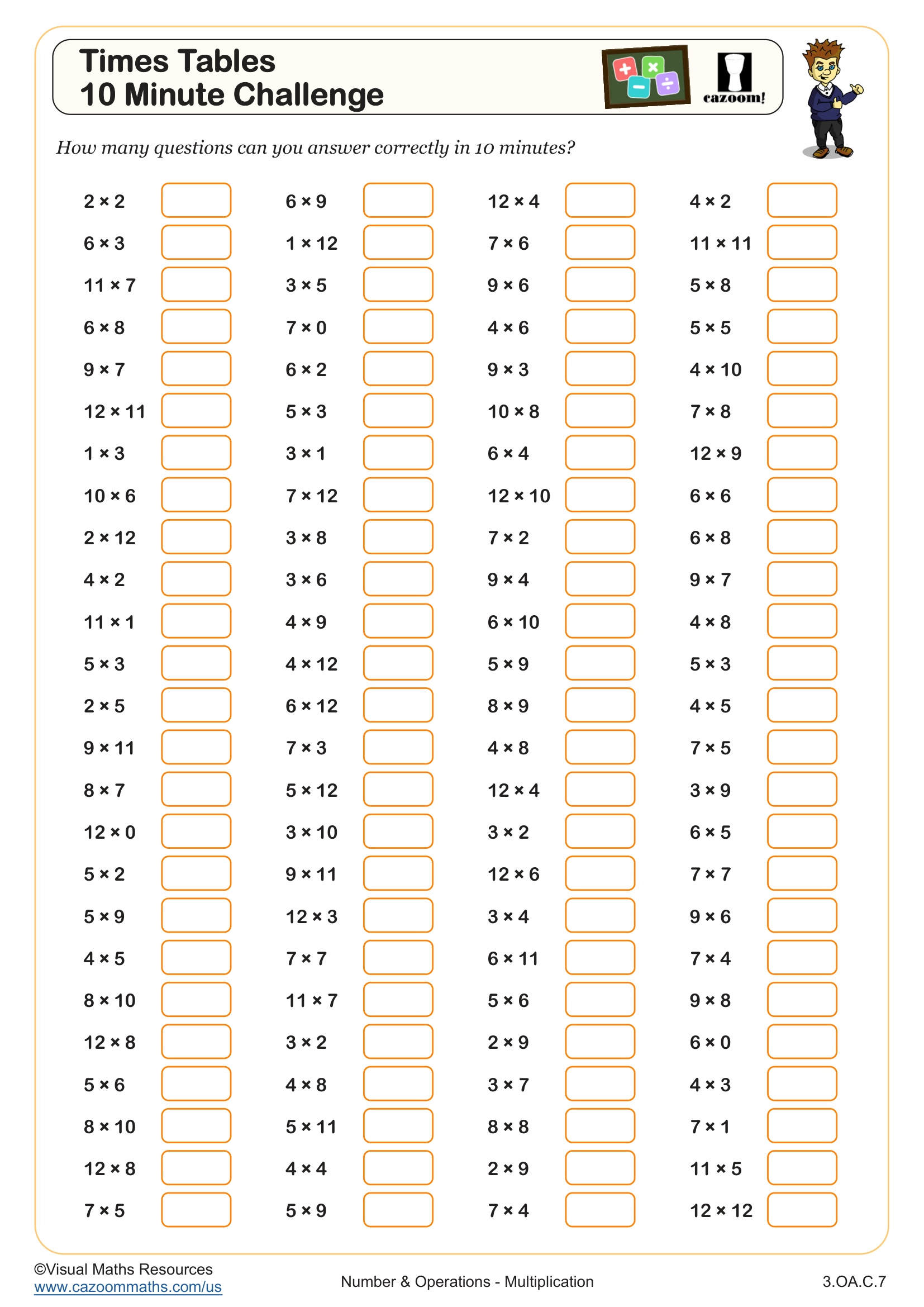Divisibility Rules (A): 2, 3, 4, 5, 8 & 10 WORKSHEET
Suitable for Grades: 4th Grade
CCSS: 4.NBT.B.6, 4.OA.B.4
CCSS Description: Find whole-number quotients and remainders with up to four-digit dividends and one-digit divisors, using strategies based on place value, the properties of operations, and/or the relationship between multiplication and division. Illustrate and explain the calculation by using equations, rectangular arrays, and/or area models.
Find all factor pairs for a whole number in the range 1–100. Recognize that a whole number is a multiple of each of its factors. Determine whether a given whole number in the range 1–100 is a multiple of a given one-digit number. Determine whether a given whole number in the range 1–100 is prime or composite.
Find all factor pairs for a whole number in the range 1–100. Recognize that a whole number is a multiple of each of its factors. Determine whether a given whole number in the range 1–100 is a multiple of a given one-digit number. Determine whether a given whole number in the range 1–100 is prime or composite.
Divisibility Rules (A): 2, 3, 4, 5, 8 & 10 WORKSHEET DESCRIPTION
This worksheet introduces foundational divisibility rules for the numbers 2, 3, 4, 5, 8, and 10.
In Section A, students identify which numbers are divisible by 2, 5 and 10, alongside considering the divisibility rules for each of these factors.
Section B asks learners to look for a pattern when finding the sum of the digits of known multiples of three. They will then use their findings to identify numbers which are divisible by 3.
In Section C, students will discover how to check whether 4 or 8 is a factor of numbers.
Lastly, students will write up the divisibility conditions for 3, 4 and 8.

RELATED TO Divisibility Rules (A): 2, 3, 4, 5, 8 & 10 WORKSHEET
Frequently Asked Questions
This divisibility rules (a): 2, 3, 4, 5, 8 & 10 worksheet is designed for students in 4th Grade and aligns with Common Core State Standards.

